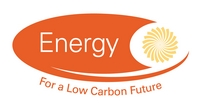Projects
Projects: Projects for Investigator |
||
| Reference Number | EP/L505869/1 | |
| Title | Power Generation and Heat Recovery from Industrial Waste Heat with Advanced CO2 Thermodynamic Power Cycles (CO2Power) | |
| Status | Completed | |
| Energy Categories | Other Power and Storage Technologies(Electric power conversion) 50%; Energy Efficiency(Industry) 50%; |
|
| Research Types | Basic and strategic applied research 100% | |
| Science and Technology Fields | PHYSICAL SCIENCES AND MATHEMATICS (Physics) 50%; ENGINEERING AND TECHNOLOGY (Mechanical, Aeronautical and Manufacturing Engineering) 50%; |
|
| UKERC Cross Cutting Characterisation | Not Cross-cutting 100% | |
| Principal Investigator |
Dr Y Ge No email address given Sch of Engineering and Design Brunel University |
|
| Award Type | Standard | |
| Funding Source | EPSRC | |
| Start Date | 01 February 2014 | |
| End Date | 31 July 2015 | |
| Duration | 18 months | |
| Total Grant Value | £98,362 | |
| Industrial Sectors | Energy | |
| Region | London | |
| Programme | Energy : Energy | |
| Investigators | Principal Investigator | Dr Y Ge , Sch of Engineering and Design, Brunel University (99.999%) |
| Other Investigator | Professor SA Tassou , Sch of Engineering and Design, Brunel University (0.001%) |
|
| Web Site | ||
| Objectives | ||
| Abstract | The vast volumes of waste heat rejected from industrial processes can be converted into electricity and useful heat through advanced energy conversation technologies. In this project, a test rig of a small-scale power generation (up to 5kW) and heat recovery system will be established with a heat source temperature between 100 ^C and 500 ^C, which is representative of actual industrial waste heat. The natural refrigerant CO2 will be engaged as a working fluid in the system, considering its excellent thermophysical properties and negligible environmental impact. Corresponding to the large temperature range of the heat source, the CO2 supercritical Rankine cycle will be applied for temperatures below 350 ^C, otherwise, combined CO2 Brayton and supercritical Rankine cycles will be employed. Simultaneously, a detailed mathematical model for the proposed system will be developed and validated with measurements. The model will then evaluate, compare and analyse different system and component designs, heat recovery potentials and control optimisations which will eventually lead to optimal design and construction of the proposed system | |
| Data | No related datasets |
|
| Projects | No related projects |
|
| Publications | No related publications |
|
| Added to Database | 23/06/14 | |



